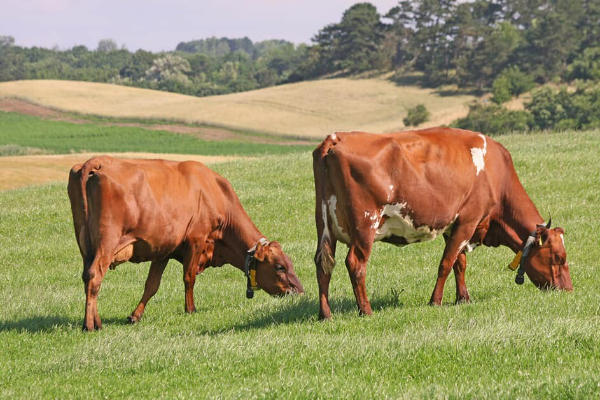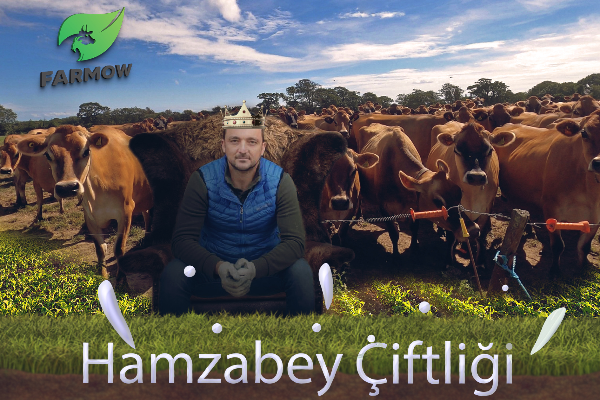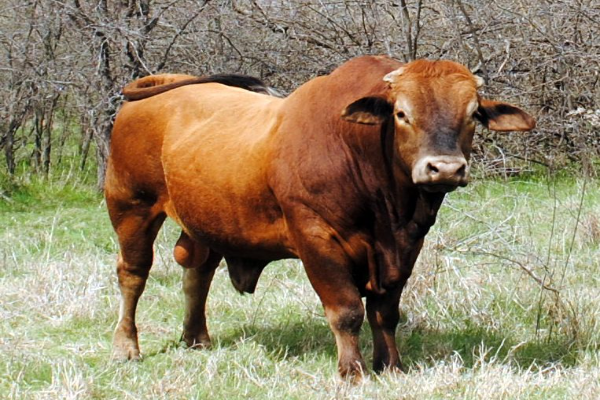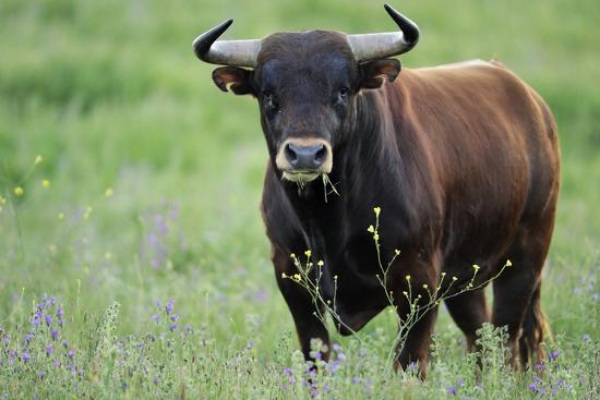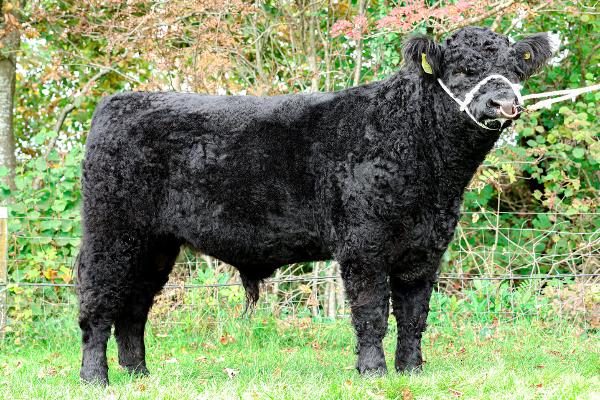Danish Red Cattle
What is the History of Danish Red Cattle ?
Danish Red cattle, also known as Red Danish or Red Dane, are a major dairy cattle breed in northern Europe. The Danish Red cattle is of the Baltic Red type and originates from the islands off the coast of Denmark. The breed was developed from North Schleswig Red, with Angeln, Ballum and crossbred with the local island cattle. It is a dual-purpose breed that is bred for both milk and meat production. The breed is available and imported into many other countries around the world. It was also used to develop several other local breeds such as Estonia-Red, Latvia-Red, Belarus-Red, Lithuania-Red, Poland-Red, Bulgaria-Red, Tambov-Red or Russian-Red.
The breed is also popular in terms of hybridization in tropical countries. Their dark red colors have made them popular in hybridization with the red Zebu dairy breeds in tropical countries such as Butana, Red Sindhi and Sahiwal. The breed's milk production is remarkable and its cows can yield very good quality milk. Moreover, after completing their useful life, they can be used as a beef breed. In the 1960s it accounted for around 61% of the total Danish dairy population. However, in the context of the industrialization of agriculture the original Danish Red has gradually been replaced with Holsteins, Jersey and Friesian breeds, or has been crossed with these other breeds until its genetic patrimony would be changed. This number had declined to a little over 20 percent by the early 1980s. However, they are no longer the most popular breed in Denmark. Dutch Friesian cattle now comfortably outnumber them. Danish Red cattle number around 40,000 in their native country.
The original uncrossed Danish Red cattle significantly decreased and now it only represents 6.7% of the Danish population of dairy cows. The breed has therefore been registered on the UN Farm and Agriculture Organization (FAO)’s endangered species list.
What are the Characteristics of Danish Red Cattle ?
• Danish Red cattle are medium to large sized animals with red color. Their coats are usually one solid color with little variation. The bulls often have a much darker red tinge.
• Danish-Red is famous for the quality milk they produce. Their milk has more milk fat (around 4.1%) and protein (around 3.5%) than Holstein Friesian.
• Cows are highly productive, long-lived and fertile.
• The calving process is relatively smooth and the calving intervals are slightly below 13 months.
• Danish-Red cattle are bred as resistant to diseases. Their good immune systems indicate that they suffer scarcely from health problems, for example, their mastitis resistance is very good.
• Danish-Red cattle are durable and compatible; they can live in both hot and cold regions.
• Danish-Red cattle are successfully hybridized with other cattle breeds, and many of the breeds that were bred recently such as Belarus Red, Bulgarian Red, and Estonian Red have been quite popular.
• Although it is mainly cultivated as a dairy breed, the meat of the Danish Red is also well accepted (the slaughter yield is usually around 56%).
• They have very strong claws.
• Both bulls and cows usually may have small horns. The cows show a typical dairy conformation and they have good sized and well-developed udders.
What are Differences Between Crossbreeds of Red Danish, Holstein-Friesian and Finnish Ayrshire Cattle?
A large experiment was initiated in Denmark in 1972 to examine the benefits deriving from systematic crossing among dairy cattle breeds of similar size and with high protein and butterfat yields. In the first phase purebred lines of Red Danish (28) and Finnish Ayrshire (28) females were compared with a line of Danish Friesian females (28) which were mated with Holstein-Friesian bulls, and to two lines of Red Danish females (each of 240) that were mated with either Finnish Ayrshire or Holstein-Friesian bulls.
Finnish Ayrshire cows were significantly lighter (587±14 kg) than Red Danish (642±5) or Danish Friesian (659±14) cows at maturity. Finnish Ayrshire cows produced significantly more butterfat in first lactation than Red Danish cows. Yields of butterfat (305-day) during first lactation were 212±7, 193±3 and 195±7 (kg) for Finnish Ayrshire, Red Danish and Danish Friesian, respectively. There were no significant differences among breeds for lifetime production, but due to better longevity Finnish Ayrshire cows were non-pregnant (empty) for a significantly longer period during their lifetime than Red Danish cows (442±31 and 374±12 days, respectively).
Red Danish females received significantly more veterinary treatment for nutritional diseases, 1.2±0.1, than either Finnish Ayrshire, 0.7±0.2, or Danish Friesian, 0.8±0.2, and Finnish Ayrshire cows received significantly less treatments for feet problems 0.5±0.2, than either Red Danish, 1.1±0.1, or Danish Friesian, 1.3±0.2, over their lifetime. Finnish Ayrshire calves were significantly lighter at birth (38.9±0.6 kg) than either Red Danish (41.2±0.5) or Friesian (41.0±0.6) calves (Holstein-Friesian x Danish Friesian) even though Red Danish calves had a significantly longer gestation length (280.6±0.3 days) than Finnish Ayrshire (279.6±0.5) and Friesian (278.9±0.5) calves.
There were no significant differences in calf mortality among these three groups, but Finnish Ayrshire cows had significantly less calving difficulty at first calving than the other breeds. Red Danish dams had a longer empty period following calving than Friesian dams. Holstein-Friesian x Red Danish crossbred calves were the heaviest of all groups (42.2±0.3 kg), while Finnish Ayrshire × Red Danish had the highest level of calf mortalities (8±1 %). Red Danish cows giving birth to crossbred calves had an empty period 8 days shorter (p<0.05) than those giving birth to purebred calves. Otherwise, there was little effect of crossbreeding on subsequent reproduction of dams.
What is the Weight of Danish Red Cattle ?
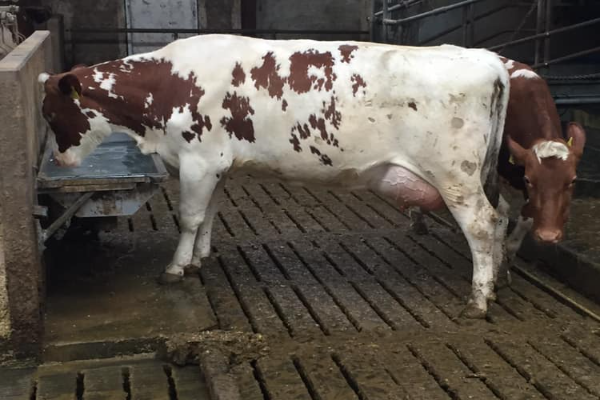
Calves are born with a weight of 36 to 40 kg. At the age of 12 months, bulls weight of 420 kg to 600 kg at 16 months. Mature cows weigh between 550 and 800 kg, bulls are approximately 1,000 kg.
References:
https://en.wikipedia.org/
https://thelivestocktraders.nl/
https://www.heifers.lv/
https://www.fondazioneslowfood.com/
https://www.roysfarm.com/
https://www.cows.ie/
https://www.tandfonline.com/
Find a BreederMore

Written by
Murat KANAT
Veteriner HekimBreedsMore
IllnessesMore
Forage cropsMore
![]() Патологическая физиология голодания Arina TARAN
Патологическая физиология голодания Arina TARAN![]() Дефицит фосфора (гипофосфатемия) Hipofosfatemi Arina TARAN
Дефицит фосфора (гипофосфатемия) Hipofosfatemi Arina TARAN![]() Какие бывают кормораздатчики для ферм КРС? Irina Makarova
Какие бывают кормораздатчики для ферм КРС? Irina Makarova![]() Кормушки для овец Diana Myakisheva
Кормушки для овец Diana Myakisheva![]() Питание домашних коз: что едят, виды корма и правила кормления Alina Arslantürk
Питание домашних коз: что едят, виды корма и правила кормления Alina Arslantürk![]() Важность минералов питании сельскохозяйственных животных Irina Makarova
Важность минералов питании сельскохозяйственных животных Irina Makarova

